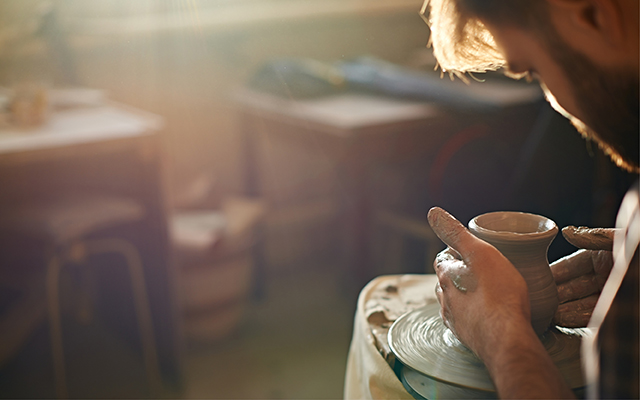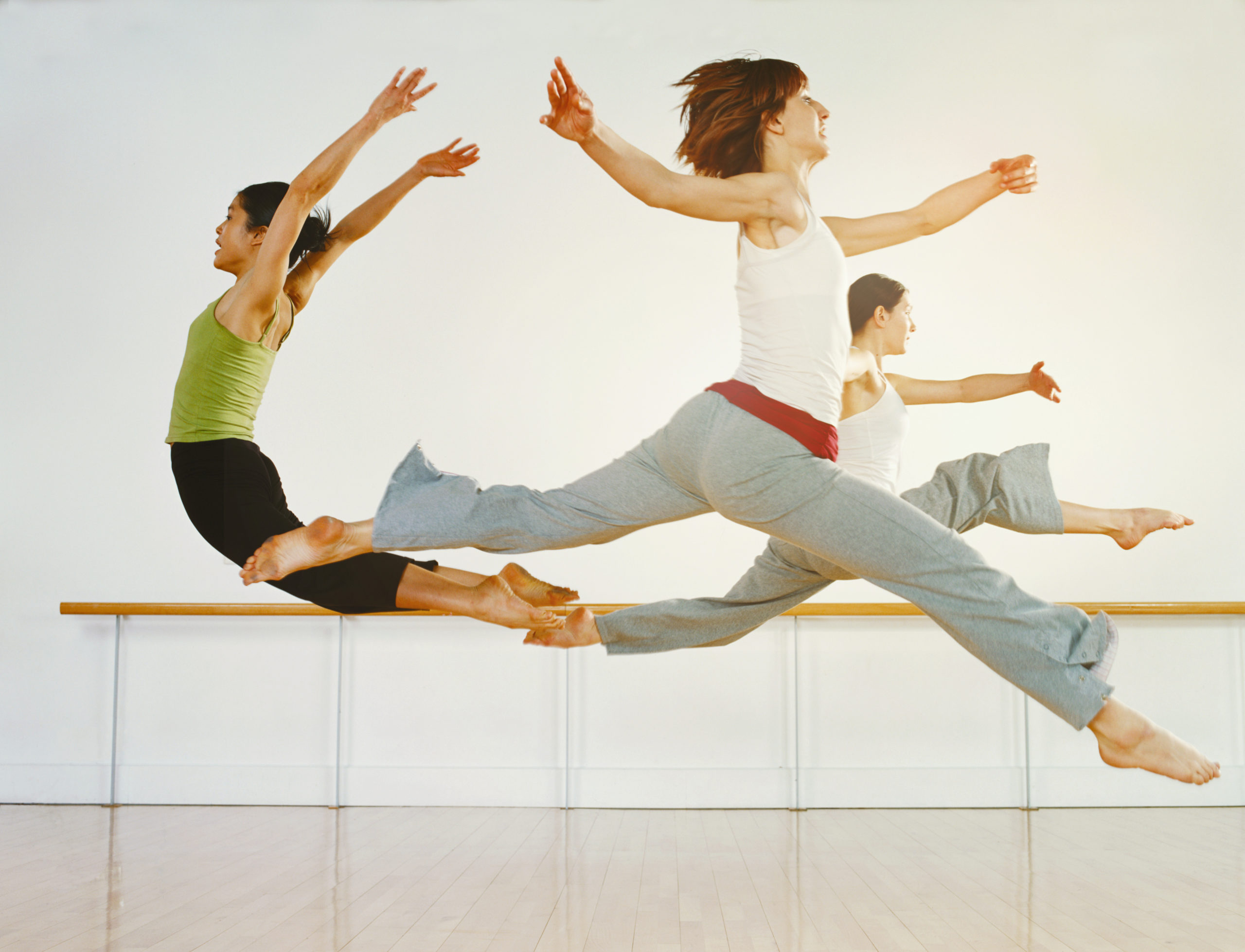You have an unfinished screenplay in a drawer and a novel somewhere in the back of your mind. You’ve thought about taking up dancing, photography, a musical instrument, maybe painting. You envy Picasso’s endless energy and Leonardo da Vinci’s restless mind. Maybe you simply want to make everything you do — whether it’s raising kids or solving problems at work — a little less conventional and a little more … well, you know. If this sounds like you, you can count on the fact that you’re getting a wake-up call from the creative spirit.
But (yep, here come logic and resistance) you have a mortgage, and your kids and job consume all your time and energy. Creativity takes talent, and who knows whether you really have any of that? Creativity is mysterious; only “certified” artists and Big Thinkers have it. Creativity makes you weird — look what a boor Beethoven was, and what Van Gogh did to his ear!
Now take a deep breath, and listen to photographer and Zen Master John Daido Loori: “Creativity is our birthright,” he writes in The Zen of Creativity: Cultivating Your Artistic Life. “It is an integral part of being human, as basic as walking, talking and thinking.”
If that’s true, then creativity may be a lot easier to (re)incorporate into your life than you might think.
Where Creativity Begins
The creative process is one of the ways humans enter into the state that psychologist Mihaly Csikszentmihalyi, PhD, calls flow — a blissful state of self-forgetfulness in which task and doer become one. One of Csikszentmihalyi’s colleagues, Anne J. Wells, even showed that flow experiences are associated with greater overall self-esteem.
Knowing all this, however, can actually make you feel worse about yourself if (thanks to life’s demands or your own fears and foibles) you find it hard to do your creative work. Are you doomed to miss out on this juicy, thrilling, necessary thing just because you’re a responsible professional, partner, parent? Because a blank canvas, an empty sheet of paper or some everyday creative opportunity leaves you at a loss?
The answer is no. Kindling the creative spark is possible for anyone, right now. And dealing with blocks to creativity, in our heads and in our lives, is as interesting — and creative — as actually “doing” creativity.
That’s right: Creativity doesn’t begin and end with a finished painting or completed novel. It begins with the smallest step in a new direction, whether that’s turning off the TV or waking up three minutes earlier than usual to scribble down your dreams. You can use every problem you face as a way to be creative. That means becoming creative is not an airy-fairy process of turning “arty”— it is a very concrete process of meeting challenges in the real world.
How Will You Find the Time?
The dream of peaceful, obstacle-free creative time is just that — a dream, says creativity coach Eric Maisel, PhD. “You must be able to create in the middle of things, or else you will not create,” he writes in Coaching the Artist Within. “If you wait for a better time to create, better than this very moment … forget about it.”
And what better place to begin than right in the middle of your day? The great American poet William Carlos Williams, a pediatrician, wrote during his moments between seeing patients. He wasn’t escaping from his work, but letting his feelings for the human body and the human truth of his patients seep into his poems.
Creativity coaches often urge their clients to silence their inner censor and just let something — anything — flow. You might free-write for five minutes, never lifting the pencil from the page, writing gibberish when nothing comes to mind — until something comes to mind, as it inevitably does. To try this is to be amazed at how much passion, vision, nonsense and freshness five minutes and a half-page of notebook paper can contain.
Excellence Is Overrated
Consider embracing badness. Intentionally paint the worst picture you can, very fast, and rejoice as you violate “good” art and rout your inner critic. This kind of impulsive creating will rev your creative engine — and leave you with enough delight and confidence to try it again tomorrow.
If you still hear an inner voice whispering, “I just don’t have the talent or drive. I just can’t be creative!” cave in and listen to it. Go ahead and give up trying to create. Enter a state of alert passivity, instead, and see what happens. “I learned to just show up at the page and write down what I heard,” writes creativity coach Julia Cameron in The Artist’s Way: A Spiritual Path to Higher Creativity. “By resigning as the self-conscious author, I wrote freely.”
Cameron’s approach of listening to her head, heart and surroundings, and then just responding and recording, isn’t the fallback position. It acts as a vitamin-B12 shot to your creative spirit, short-circuiting creation’s biggest enemy: self-consciousness.
But creativity — even the kind that isn’t aimed at an artistic result — still requires that you faithfully clock in at your desk or studio. Showing up is half the battle. If possible, suggests Maisel, get to your creative work first thing out of bed. Not only will you get going before the day’s demands and your inner voices begin, but you’ll also benefit from the lingering dream-energy you’ve brought with you from the pillow. (For more procrastination-busting advice, see “The Battle of the Block”.)
Once you’ve jump-started your creative self, there are all kinds of ways to keep the motor running (see “Jump-Start Your Creativity,” below, for ideas). The main thing, though, is to believe that creativity is your birthright and that you can access it far more easily and quickly than you might think. This awareness lets you start creating, right now. So don’t wait. After all, as Cameron writes: “Art is not about thinking something up. It is about the opposite — getting something down.”
Jump-Start Your Creativity
Here are some hints for rekindling your creativity:
1. Find time the easy way. Cut out television watching, aimless shopping, excessive emailing or other less-than-satisfying habits. You’ll be amazed at the time vistas that open up.
2. Use anything at all to get going. Pick three magazine pictures at random and write a story about them. Steal a line from a poem and use it to begin a song. Open the dictionary, pick a word, and let it inspire a drawing or sculpture.
3. Don’t create alone. Form a group that gathers once a week or month to create or craft together. No judgment or critique — just mutual presence, support and accountability.
4. Cultivate really unconventional thinking, just for the creativity of it. When traffic snarls, don’t say, “Must be an accident up at the cutoff.” Say: “Martians must have landed and melted the highway with their particle cannons.” Fanning the Creative Spirit by Charlie and Maria Girsch contains this and many other suggestions for off-the-wall brain calisthenics.
5. Use affirmations, like “I am creative and full of good ideas,” or “I will create fearlessly today,” as mantras and spells against negative self-talk.
6. Dare to be bad. Mess around — you can always fix it later. Or not. Fearless badness kills your inner censor. Permission to be mediocre (or worse) is one of the best doorways into true creativity.
This article originally appeared as “Get Creative.”




This Post Has 0 Comments